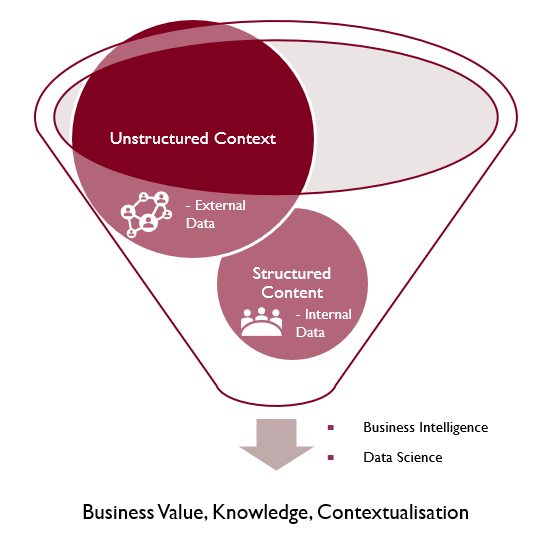With so much data available today, the trick is to focus on finding the exact bits of data that benefit your company’s objectives or help boost the overall value of your company to make it more attractive to investors.
In 2012, Facebook paid US$1bn to buy Instagram because of its data potential. At the time, Instagram could be run by only 13 people because its data systems were so good.
So what are the types of data?
Broadly speaking, data can be split into two main groups: structured and unstructured.
Typically, structured data is the internal business data that is organised in a traditional database format. It’s easy to access and generally owned by the business. It gives the ‘What?’ information but lacks the bigger-picture context. Think of it as the information about a product that’s just been bought.
Unstructured data provides the ‘Who?’, ‘Why?’, ‘Where?’, and ‘When?’ information or the context. It’s the detail about that person leading up to the sale, as well as anyone else who may have looked at a product but failed to purchase it, those who walked past the shop without even entering it, and those who spoke about it online.
The rich insight data split would be about 20% structured versus 80% unstructured. As you can guess, the unstructured data can be very valuable indeed if combined correctly; but with that value comes a higher level of complexity, and the costs can outweigh the benefits.

Types of data available
Here are just some of the many different types of data that are available:
- An activity that takes places anywhere, be it physical or online. This can come from business systems, smart watches, likes/shares on social media etc.
- A conversation via email, SMS, instant message, blogs, comments, social posts, phone calls etc.
- Photos and videos via picture files, CCTV, online videos etc.
- Sensors that can be built into a multitude of things, such as engines, smartphones, street lights, medical devices, cars, proximity devices, ambient devices, near field communications devices (wireless payment), cricket bats, and yoga mats.
Start your journey...
Each company has its own unique data needs. Do you know what types of data you have access to or what data you need? Contact us now, and we can help you on your way.